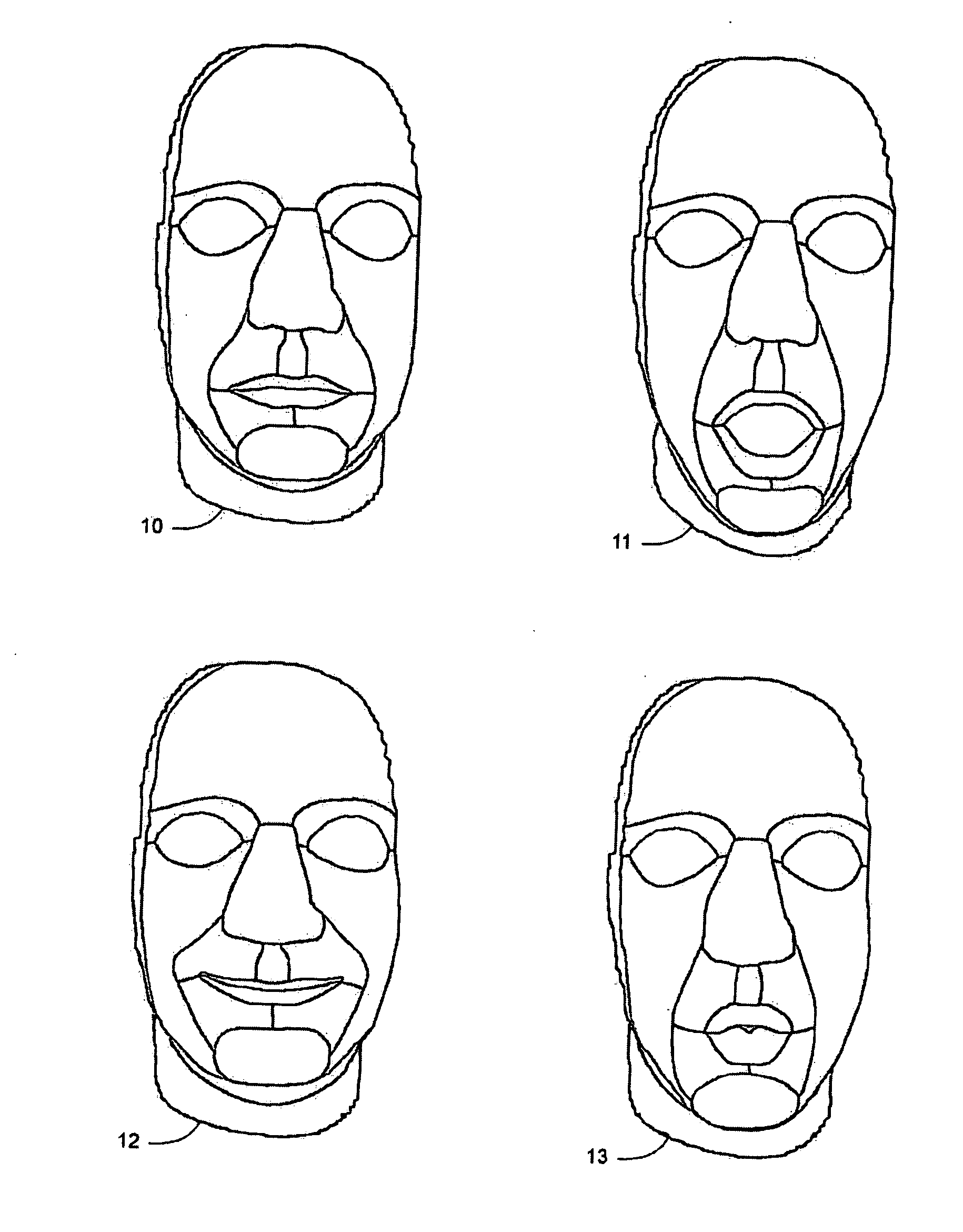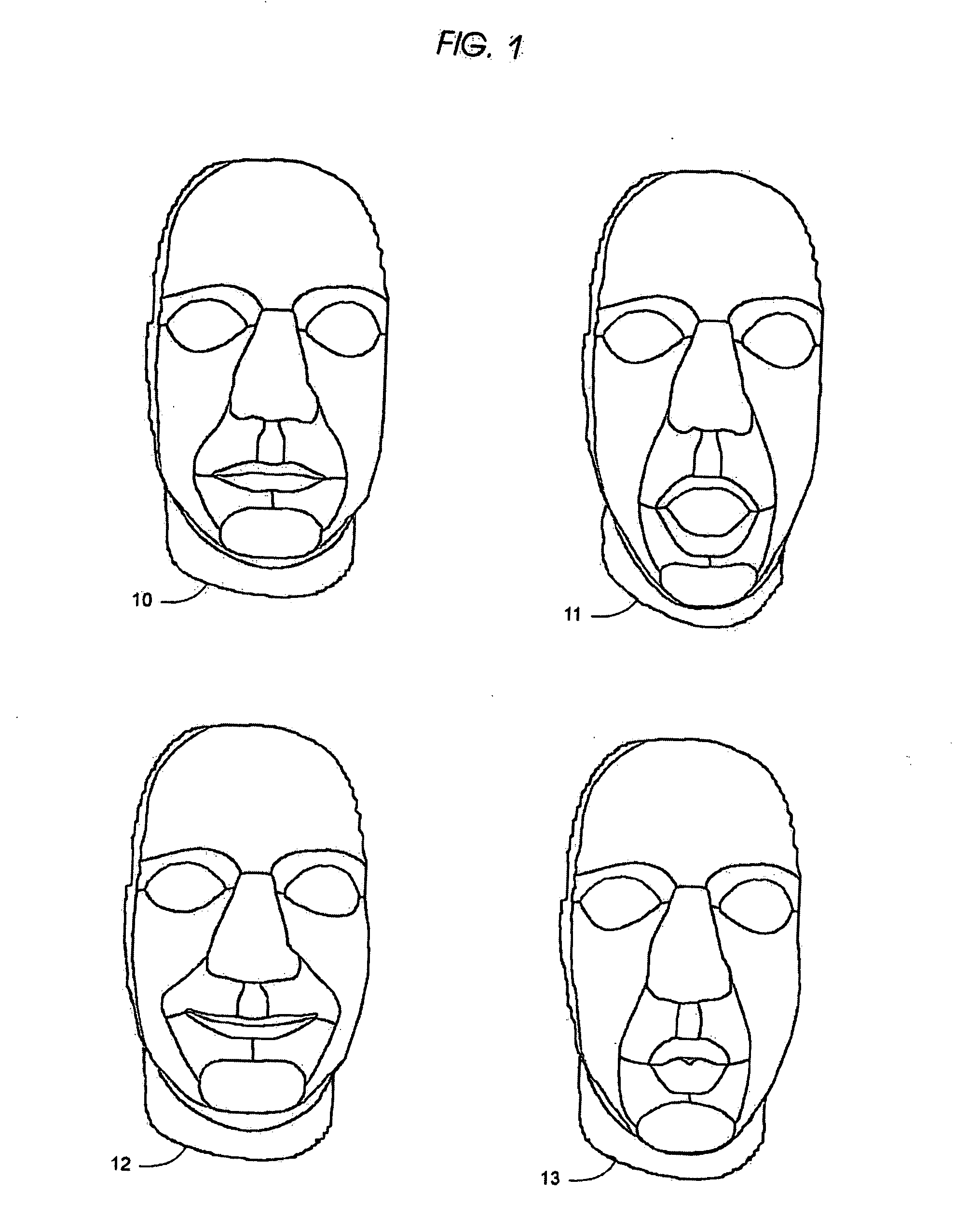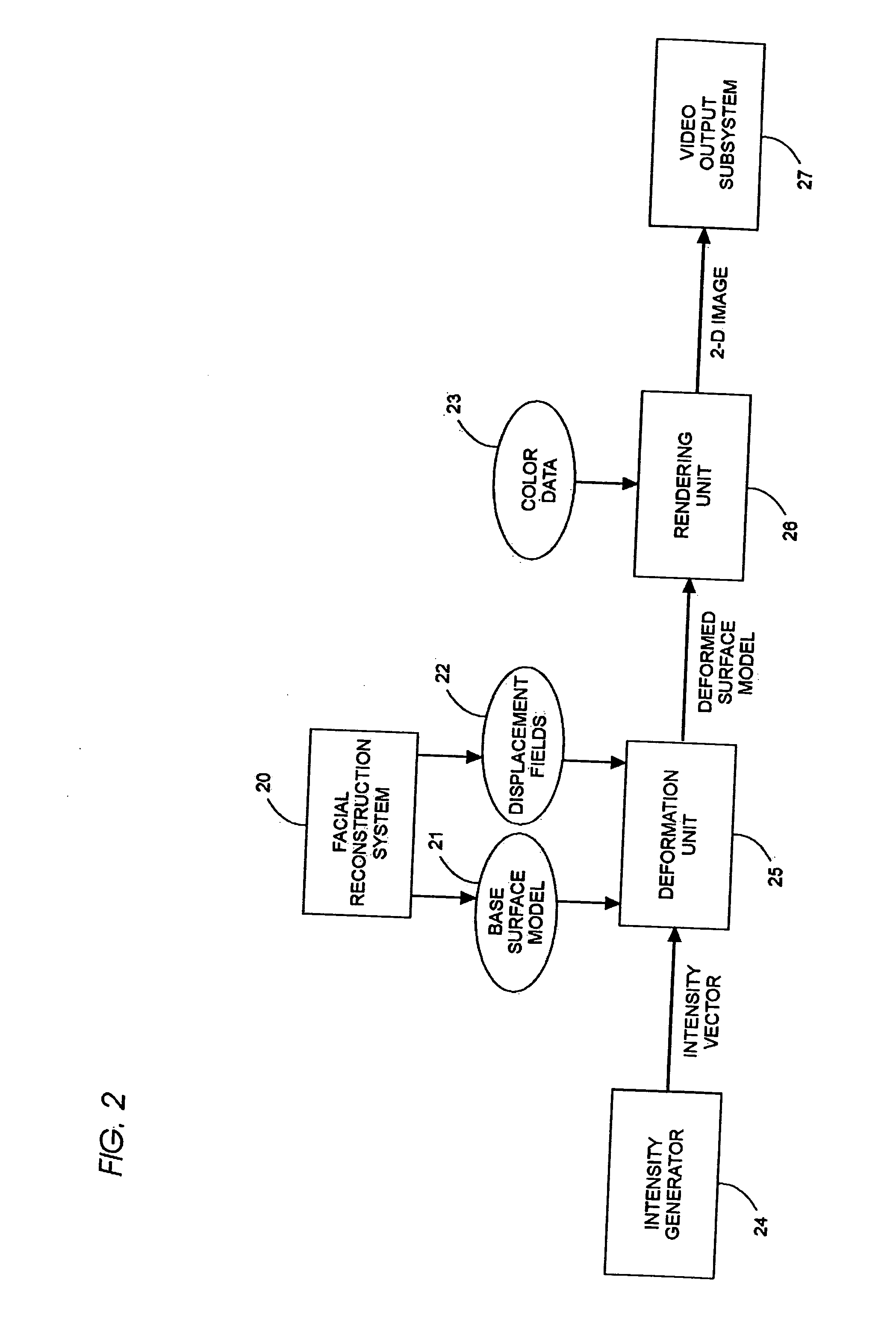Static and dynamic 3-D human face reconstruction
a dynamic and dynamic technology, applied in the field of three-dimensional (3d) modeling and animation by computer, can solve the problems of significantly less labor and skill, high-fidelity reconstruction of the actor's fa
- Summary
- Abstract
- Description
- Claims
- Application Information
AI Technical Summary
Benefits of technology
Problems solved by technology
Method used
Image
Examples
Embodiment Construction
Following are definitions of terms and notation used in this description.
Topological Models
A “topological model” or “graph” is defined as a set of points, called “vertices,” and a set of connections between pairs of them, called “edges.” An edge between two vertices i and j is represented as a set {i,j}. Formally, a graph G is herein defined as a set comprising the union of i) a set of vertices, denoted V(G), and ii) a set of edges, denoted E(G),
where V(G)=E(G). A “sub-graph” H of G is a graph such that H⊂G.
Given a graph G, a “path” H in G is a sub-graph H⊂G with edges of the form E(H)={{i0,i1}, {i1,i2}, {i2,i3}, . . . , {in−1,in}}. The vertices i0 and in are called the “terminal vertices” of the path. The path is called a “cycle” if i0=in. G is called “connected” if for every pair of vertices i and j in V(G) there exists a path in G of which i and j are the terminal vertices.
A “triangle” in G is a cycle of three edges connecting three vertices—for example, {i,j,k,{i,j}...
PUM
 Login to View More
Login to View More Abstract
Description
Claims
Application Information
 Login to View More
Login to View More - R&D
- Intellectual Property
- Life Sciences
- Materials
- Tech Scout
- Unparalleled Data Quality
- Higher Quality Content
- 60% Fewer Hallucinations
Browse by: Latest US Patents, China's latest patents, Technical Efficacy Thesaurus, Application Domain, Technology Topic, Popular Technical Reports.
© 2025 PatSnap. All rights reserved.Legal|Privacy policy|Modern Slavery Act Transparency Statement|Sitemap|About US| Contact US: help@patsnap.com



